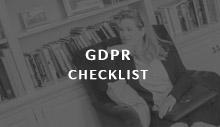
I have heard of many people who are setting up a business and spent ages pondering a name for the business, spent a fortune on a website, logo, business cards and other marketing materials and then for one reason or another discover they can no longer use their business name and have to re-do the website, logo, business cards and other marketing materials etc at great expense. Make sure this doesn’t happen to you by following my top tips for choosing a business name:
1. Check that your proposed name or a very similar name is not already registered at Companies House. You can check online for free here or google “Companies House webcheck”. Although only limited company names and LLP names are registered at Companies House, you may want to register as a limited company, if not at the start of your business at some stage in the future, and you won’t be able to register your business name if there is already a company registered with the same or a similar name.
2. Check that your proposed name or similar is not registered with the Business Names Registry. This register includes the names of businesses which are not necessarily limited companies and LLPs and therefore won’t be found on the Companies House search. It is not mandatory to register so this database doesn’t contain all of the business names out there but it is still worthwhile doing a search. You can search online for free here.
3. If you want to form a limited company or LLP (or there is a chance that you might want to do so in the future), check that the name does not include a sensitive word (such as British, National, International, European, Association, Authority, Chartered, Council, Institute, Society, Charity, Insurance, Register, Trust, Health Centre, Parliament, Government, Royal, Queen, Prince) as you need to obtain the approval of the Secretary of State for these names to be registered and they will only be approved if it is absolutely appropriate for you to use the name.
4. Ensure your proposed name is not the same or very similar to a registered trade mark of a product or service in the same market as you. If it is, you may risk the owner of the trade mark bringing an action against you to stop you using the name or at the least will not be able to register the name as your own trade mark. You can search online for free here.
5. Make sure your name is capable of being trade marked as you may wish to trademark your business name at some stage in the future. See my article on this point.
6. Carry out a domain name search to check that the domain names are still available. It might be worth registering both .com and .co.uk and having a redirection to prevent somebody else from using them. You can search online for free at Nominet – Also do a google search to check that a competing business isn’t using a similar name because if it is, you might run into problems with passing off down the line.
7. And finally, not really a legal point, but if you are hoping to expand internationally, make sure that your name doesn’t have meanings or associations that you would rather it didn’t in those jurisdictions.
I hope that this is helpful but if anyone has any questions, please get in touch!













